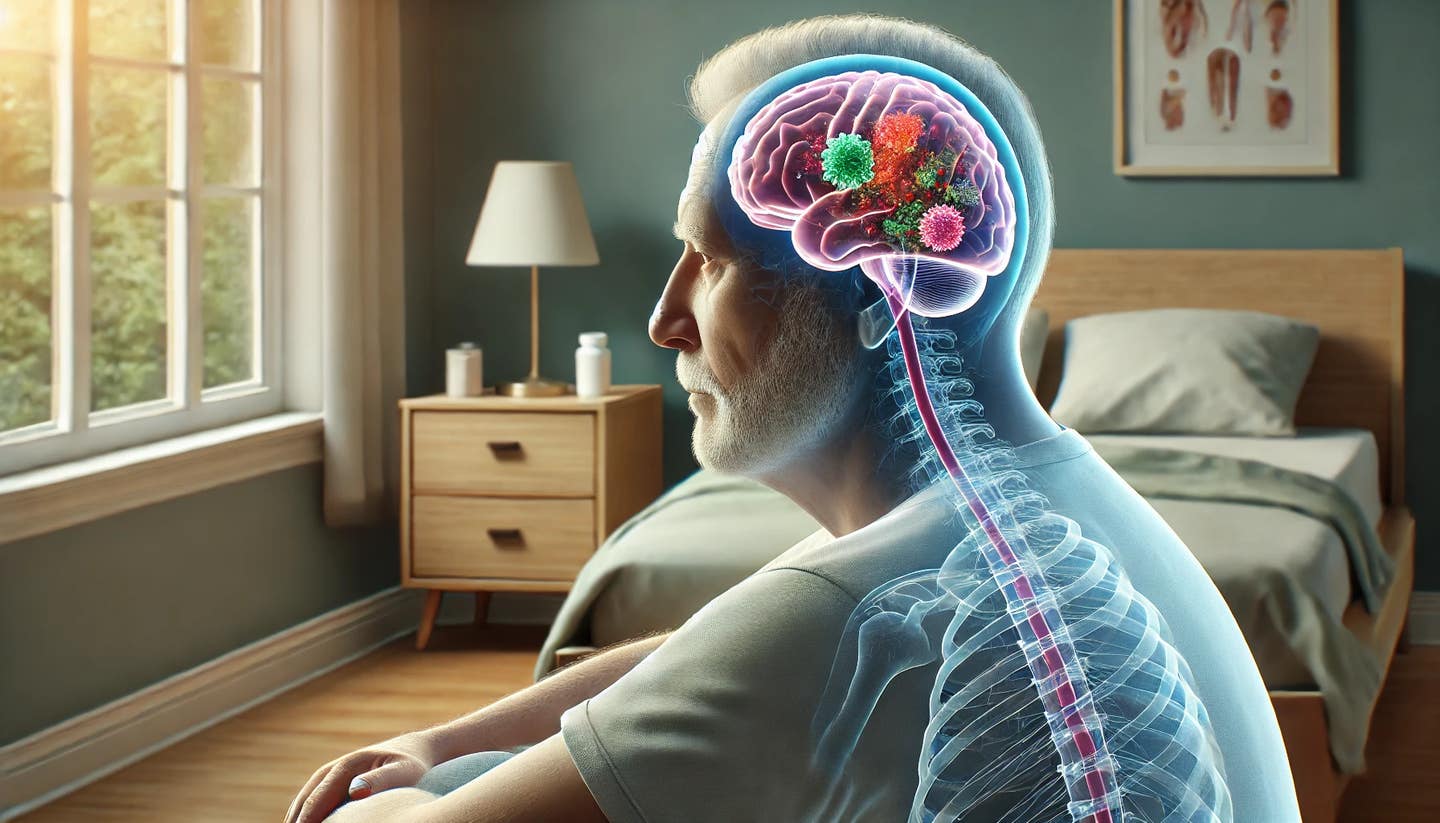Breakthrough study upends current knowledge of Alzheimer’s, memory and aging
This research challenges conventional wisdom, shedding light on the broader impact of Alzheimer’s on brain function.

This research challenges conventional wisdom, shedding light on the broader impact of Alzheimer's on brain function. (CREDIT: Creative Commons)
In a groundbreaking study published in The Journal of Neuroscience, scientists at The University of Texas at Dallas Center for Vital Longevity (CVL) have unveiled striking evidence suggesting that the alterations in brain network patterns observed in early-stage Alzheimer's disease are distinct from those associated with normal aging.
This research challenges conventional wisdom, shedding light on the broader impact of Alzheimer's on brain function, extending beyond memory and attention deficits. Notably, the study's findings also reveal changes in circuits related to sensory and motor processing, potentially opening new avenues for early detection and treatment of the disease.
Dr. Gagan Wig, an associate professor of psychology in the School of Behavioral and Brain Sciences at UT Dallas and the corresponding author of the study, emphasized the significance of these findings.
Alzheimer’s disease and aging are associated with distinct patterns of brain network disruption. Alzheimer’s impacts brain connectivity, including both higher order cognitive networks and sensory and motor networks (left), while aging is limited to disruption of cognitive networks. (CREDIT: UT Dallas)
He noted, "Some Alzheimer's disease-accompanied brain dysfunction that goes beyond memory and attention might be detectable at very early stages, even during mild cognitive impairment before a diagnosis of Alzheimer's." This revelation offers a glimmer of hope for early intervention in Alzheimer's cases, potentially improving the quality of life for affected individuals.
Changes in brain networks associated with Alzheimer's disease
One of the key discoveries made by the research team is that the changes in brain networks associated with Alzheimer's are independent of other factors commonly linked to the disease, such as the presence of elevated levels of amyloid plaques, which result from the aggregation of beta-amyloid proteins in the brain.
Dr. Wig pointed out that this brain-network dysfunction could revolutionize how Alzheimer's-related cognitive impairment is characterized and treated, stating, "We've come to realize that the targets we've been focusing on might not be sufficient, including the idea of amyloid being the primary culprit of Alzheimer's disease."
Related Stories
The researchers argue that the traditional approach of solely targeting amyloid may not be enough to tackle the complexity of Alzheimer's disease. Instead, their findings suggest that circuit dysfunction in the brain remains even when amyloid burden is taken into account.
This realization prompts a shift in perspective on how the disease should be approached and understood.
Neuroscientists have been categorizing brain regions and systems based on their functions for over a century. These networks govern various sensory and motor operations, while other association systems integrate and retain information, overseeing functions such as attention, memory, and language.
Dr. Wig believes that this distinction between different brain systems plays a pivotal role in differentiating between healthy aging and Alzheimer's disease.
"In healthy aging, changes seem largely focused on association systems. Sensory and motor systems are generally stable," Dr. Wig explained. He used an example to illustrate the point: "For example, the brain of an 80-year-old is very likely to have noticeable atrophy in an association cortex but may have relatively more preserved visual and auditory cortex."
To further investigate these distinctions, the research team examined the effects of age and Alzheimer's severity on resting-state brain system segregation in a study involving 326 cognitively healthy individuals and 275 cognitively impaired individuals.
Left to Right: Ziwei Zhang, cognition and neuroscience doctoral student and Dr. Gagan Wig, associate professor of psychology in the School of Behavioral and Brain Sciences. (CREDIT: UT Dallas)
The data was collected as part of the Alzheimer's Disease Neuroimaging Initiative (ADNI), a public-private partnership partially funded by the National Institutes of Health (NIH). Dr. Wig praised the availability of this extensive database, saying, "This work would be impossible without the massive, multisite ADNI database that has been made available to Alzheimer's disease researchers such as our group."
The first author of the study, Ziwei Zhang, a doctoral student specializing in cognition and neuroscience and a member of Dr. Wig's neuroimaging lab, shared insights into their findings. Zhang highlighted the fact that the network interactions affected by Alzheimer's encompass a broader group than those affected by the natural aging process.
Resting-state brain system segregation decreases as a function of both age and dementia severity. (CREDIT: The Journal of Neuroscience)
She explained, "In older adults who don't show any cognitive impairment, the interactions altered are primarily among brain regions performing similar functions or within brain systems. However, in patients diagnosed with Alzheimer's disease, the interactions between regions that perform distinct functions — such as visual processing and memory — are also altered."
One of the longstanding puzzles in neuroscience has been understanding why some individuals can exhibit typical Alzheimer's pathologies, including amyloid plaques and neurofibrillary tangles, yet remain cognitively unaffected. Dr. Wig believes that their new findings provide critical insights, suggesting that cognitive dysfunction in Alzheimer's is likely linked to functional network changes that can be dissociate from amyloid levels.
Dementia severity and age exhibit different relationships with the segregation of sensory-motor system versus association system. (CREDIT: The Journal of Neuroscience)
"These observations offer important clues toward identifying the types of behavioral deficits that are most impacted at early stages of Alzheimer's disease and other forms of dementia," Dr. Wig asserted. He also highlighted the potential of their research to refine brain network-based biomarkers for Alzheimer's diagnosis and measuring disease risk in otherwise healthy individuals.
This study provides hope for earlier detection and more effective treatments. As the scientific community continues to explore the complexities of Alzheimer's, these findings could prove instrumental in the development of new diagnostic tools and therapeutic interventions, ultimately offering a brighter future for those affected by this devastating disease.
For more science news stories check out our New Discoveries section at The Brighter Side of News.
Note: Materials provided above by The Brighter Side of News. Content may be edited for style and length.
Like these kind of feel good stories? Get the Brighter Side of News' newsletter.
Joseph Shavit
Head Science News Writer | Communicating Innovation & Discovery
Based in Los Angeles, Joseph Shavit is an accomplished science journalist, head science news writer and co-founder at The Brighter Side of News, where he translates cutting-edge discoveries into compelling stories for a broad audience. With a strong background spanning science, business, product management, media leadership, and entrepreneurship, Joseph brings a unique perspective to science communication. His expertise allows him to uncover the intersection of technological advancements and market potential, shedding light on how groundbreaking research evolves into transformative products and industries.



